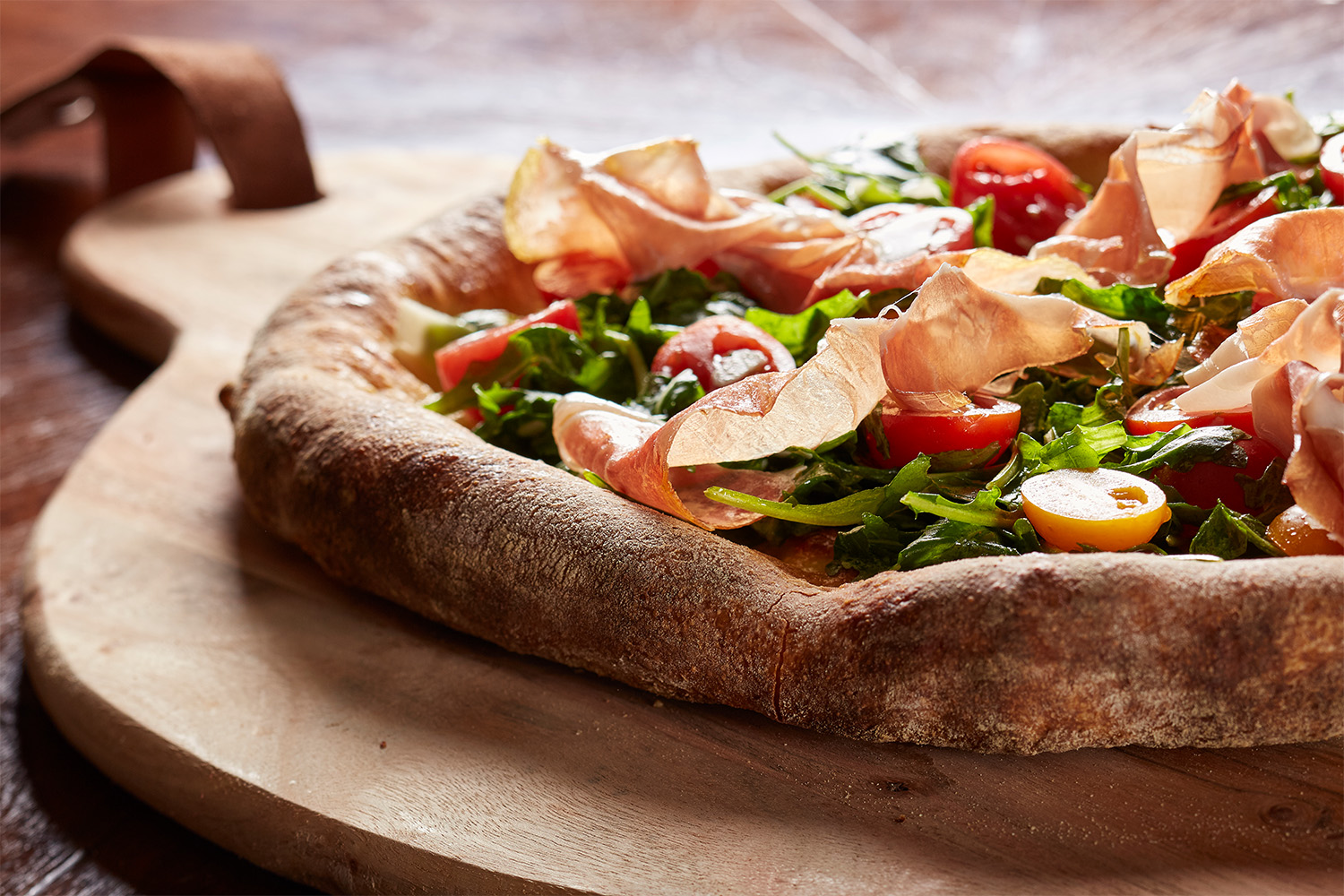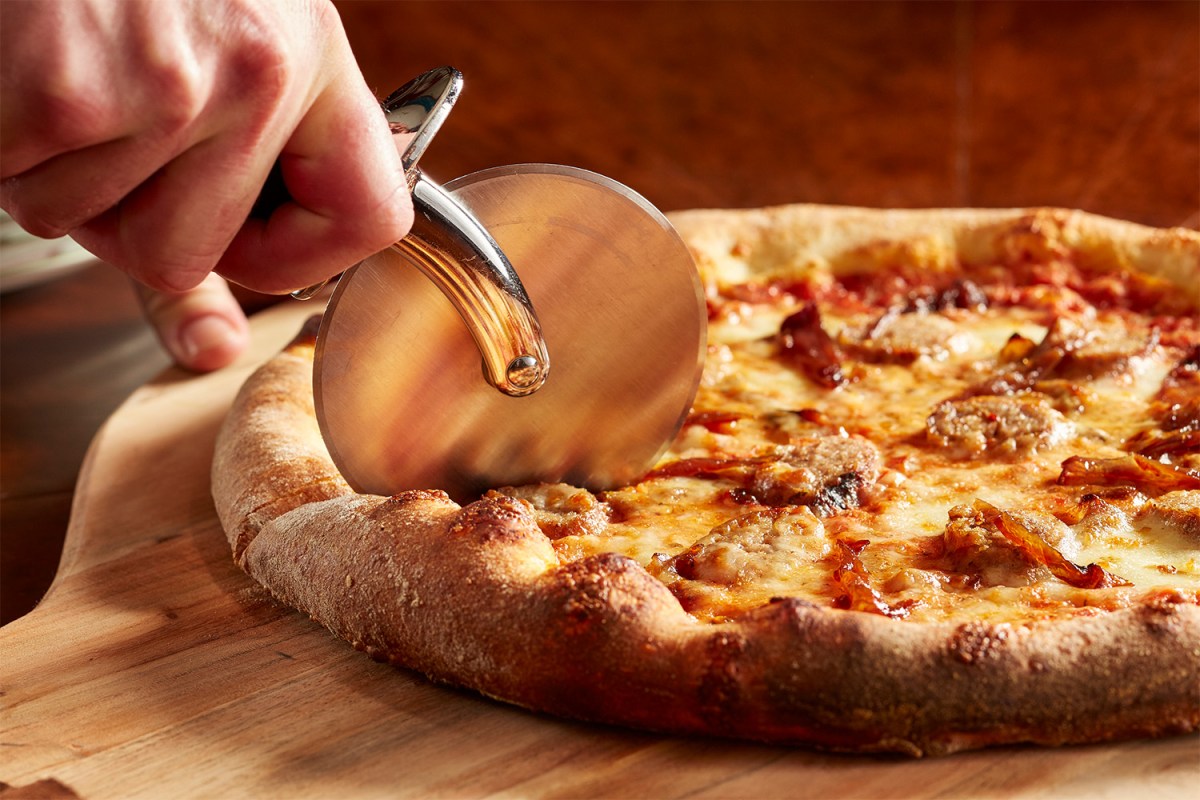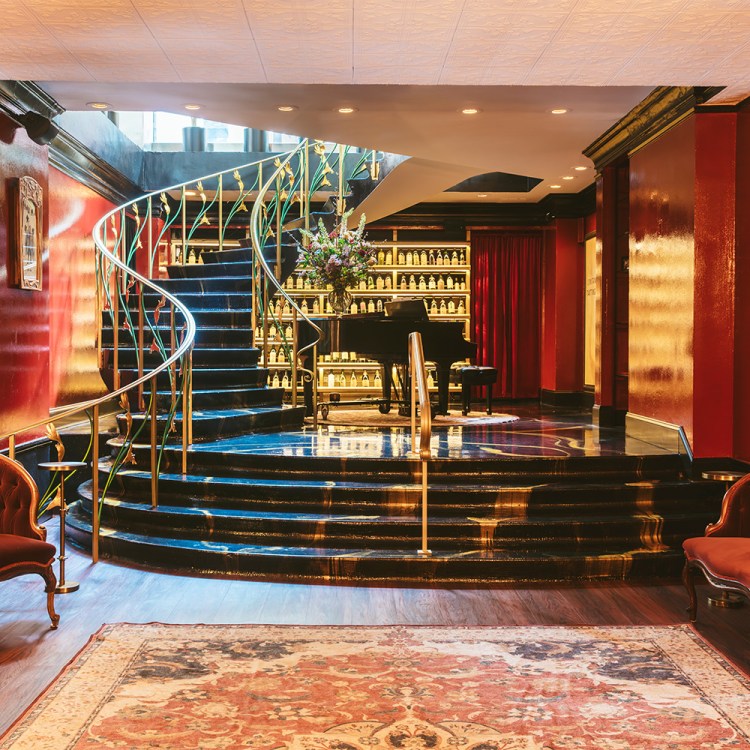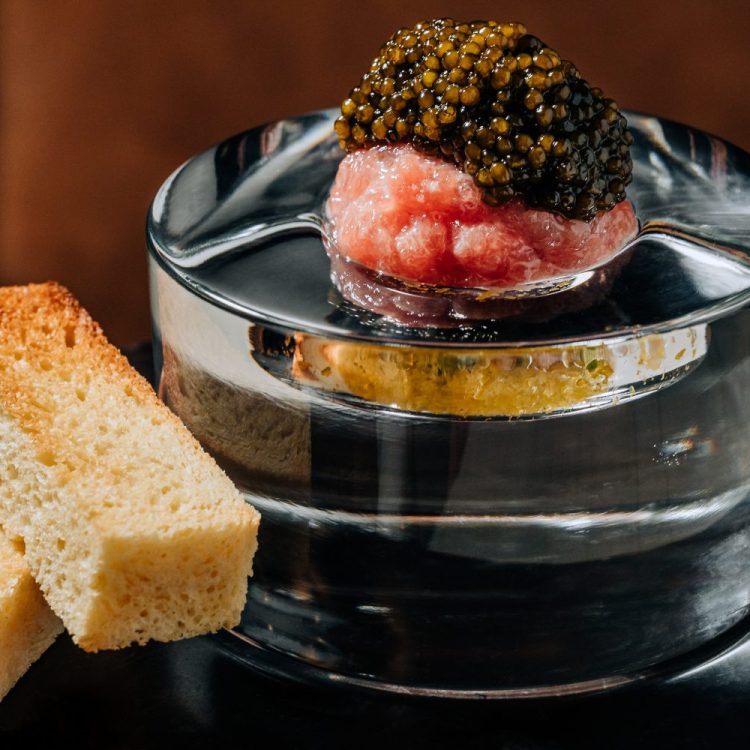When Chicago-based journalist, author and bona fide pizza expert Steve Dolinsky escorts pizza lovers around Chicago on his tours, he is forever facing off with the same pervasive stereotype.
“They all think sort of the same thing: that Chicago’s deep-dish country,” says the author of Pizza City, USA: 101 Reasons Why Chicago is America’s Greatest Pizza Town. “They’re all expecting to eat sort of deep, high, substantial pizza.”
The reality is anything but. On his tours, he says, “You’re going to try three or four different styles of pizza, so yeah, you’ll probably get one deep-dish. But that’s gonna be it.”
It’s a reflection, he says, of the variety that makes up Chicago’s pizzascape — a well-kept local secret that eludes many visitors to the city that he says deserves a nickname linked not to its windiness but to its wealth of pizza.
One cannot deny the rich history and impact of deep-dish on Chicago’s culinary landscape. First invented in the ‘40s at what would later become Pizzeria Uno, deep-dish is perceived by many to be built upside-down, with a layer of dough pressed into a deep pan and topped with cheese, sausage, and, finally, tomato sauce.
Ric Riccardo, the owner of the then-eponymous Pizzeria Riccardo (which would later become Pizzeria Uno) is usually cited as deep-dish’s inventor. But there are many voices of dissent. The BBC notably highlights several previous Uno’s employees, including Alice May Redmond, as the possible true inventor of the recipe; Redmond ostensibly brought it to Gino’s East when she was hired there in 1966. Rudy Malnati Sr. is another contender, with the BBC noting that Malnati ostensibly passed the recipe on to one or both of his sons: Lou, who managed Uno’s until 1971, when he opened Lou Malnati’s, and/or Rudy Jr., who opened Pizano’s in 1991.
Whoever actually came up with the concept of deep-dish, however, one thing seems certain: While it may have gotten its start at Uno’s, soon, it was omnipresent — and it had become synonymous with the city.
“You can’t really find it anywhere else in the U.S.,” says Dolinsky. “It’s something that was born here.”
But for Jonathan Porter, founder of Chicago Pizza Tours, to align Chicago too closely with deep-dish is a mistake. And while he begins his tours at deep-dish stalwart Pizano’s, that’s just the tip of the iceberg.
“We tell them a little bit about the story and the invention of deep-dish pizza, how it happened, where it happened, why it came about and all that,” he says, “but one of the kickers is that while we’re known for deep-dish throughout the world, for the most part, the locals really only eat it on special occasions or when people from out of town are visiting us.”
The confusion is in part due to the fact that there are in fact two deep styles of pizza in Chicago: deep-dish (which according to Dolinsky, isn’t even that deep, at about 5/8 inch in the middle) and stuffed pizza. The latter, invented in the 1970s (at either Nancy’s or Giordano’s, depending on whom you ask), is bigger and bolder than deep-dish, with an extra layer of dough beneath the sauce.
“Stuffed pizzas are the ones that sort of look like an above-ground outdoor pool,” says Dolinsky.
Images of stuffed pizza also, confusingly, often stand in for true deep-dish, notably in Jon Stewart’s epic rant dubbing the latter “not only not better than New York pizza, it’s not pizza. It’s a fucking casserole!”
“Whenever people are kind of ragging on Chicago-style pizza and want to make a joke of it,” says Porter, “nine times out of ten, they show a picture of a Giordano’s stuffed pizza.”
Dolinsky contends that if Stewart is really criticizing stuffed pizza in his rant, he’s not alone.
“I do not like that top layer of dough,” he says, “because it sits between sauce and cheese, and therefore, it never really gets firm. It’s sort of like a wet noodle.”
And moreover, stuffed pizza is not the only kind typically associated with the Pizza City that Dolinsky isn’t a fan of. Indeed, there are a few stalwarts of the old guard that don’t feature in his consequential list of the top pizzas in Chicago, including Uno’s, Due’s, Giordano’s, and Gino’s East.
“The four places that people talk about the most are not in either of my books,” he says. “I don’t know what the attraction is.”
This, he concedes, may be due to inertia. After all, these downtown spots are favored, not by locals, but by out-of-towners. Chicagoans, he asserts, mostly steer clear.
“We definitely like deep-dish when done properly,” he says. “But most Chicagoans eat tavern-style.”
If you’re not from Chicago, you may have never heard of this cracker-thin local pie. And yet, tavern-style predates deep-dish by a decade, first appearing at local bars in the ‘30s. Typically baked in an electric oven rather than the coal-fired ones preferred in Naples or New York, tavern-style pizza is known for having very little naked crust around the edges, as well as for the party-cut that results in a confounding square slice of a round pie.
Tavern-style is perhaps the truer Chicago pizza — not just the OG, but the one that, Porter asserts, most locals grew up on. And yet, it’s not the most prevalent style in Chicagoland, at least not these days.
For Dolinsky, who sampled 185 pizzas for his first book, Chicago is home to no fewer than ten distinct styles of pizza, from Detroit to Roman, New Haven to New York.
“We’re seeing an uber-thin, but beyond tavern-style thin,” he says. “We’re also seeing Sicilians. We’re also seeing artisan pies with three-day fermentation.”
One of the first non-native spots to gain wide acclaim, Porter says, was Piece Pizza, which began peddling its New Haven-style pies in Wicker Park in 2001. These days, there are hundreds of pizza joints all over the city and a bevy of styles to choose from.
Five Squared opened in 2019 as a roaming food truck; it has since evolved into a popular pickup and delivery business. For co-founders Steve and Jenn Kaplan, both Chicagoland natives, the idea of cooking up Detroit-style squares was a no-brainer, after Steve first encountered the style about eight years ago at Detroit chain Jet’s.
“I fell in love with the thick- yet-airy crispy crust, the lacy cheese perimeter, and the flavorful sauce,” he says. “I thought to myself that if this is what chain Detroit style tastes like, then a more ‘artisanal’ version had to be incredible.”
The result has certainly conquered local hearts, be they Michigan transplants or native Chicagoans, with the spot regularly featuring on best-of lists from outlets like CN Traveler and the Infatuation.
“People have been very receptive to our concept,” says Kaplan, of the mix-and-match boxes the restaurant is known for. “This allows people to order for multiple people, where everyone gets exactly what they want.”
Chef-driven pizzas also pervade the city, at spots like Pizza Friendly Pizza or Robert’s. The former, run by Michelin-starred chef Noah Sandoval, started during the pandemic as a Ukrainian Village pop-up.
“Oriole was closed due to Covid when Bruce [Finkelman] approached me about the opportunity to turn Bite Cafe (also closed due to Covid) into a more realistic way of staying open/employing people,” recalls Sandoval. “Pizza somehow made sense, and I honestly needed a break from the pressure of Oriole’s kitchen.”
Of course, he still adds Michelin-level flair: The Sicilian slice he settled on after much R&D starts with a five-day fermentation for a rich, flavorful crust.

“It’d be silly to say we’re in a Chicago pizza boom, but I’m going to say it anyway,” he says. “It’s very exciting to be putting out great pizza in a city that is really embracing different styles.”
Robert’s Pizza Dough and Co. first opened in 2016 and regularly features as a favorite among experts.
“We felt we had something different to bring to the table,” says the self-taught Robert Garvey of his wood-fired pie, made with a dough recipe perfected over 20 years of trial and error.
“I spend a lot of time developing, researching, experimenting to explore different flavor profiles,” he continues, “so what our customer gets is truly a pizza experience that comes from a dedicated process — which is why we have the motto “Love dough responsibly.’”
If you ask some people, Garvey’s choice of Chicago as his home base is even more contentious: After all, he’s a native New Yorker.
“The New York/Chicago pizza thing is sort of like the Bears and the Packers,” says Dolinsky, who says it’s evocative of Chicago’s pervasive “second city” mentality.
“All the major national food press is based in New York,” he says. “It’s hard to argue with producers, editors, and writers who live in Brooklyn and have never been to Chicago.”
While he maintains it’s far more interesting to compare iterations of the same style — the best Detroit in both NYC and Chicago; the best deep-dish in Manhattan — if we’re really going to get into it, one thing is for sure: Chicago has more variety than the Big Apple.
“I don’t see that in New York,” says Dolinsky. “I mean, I see more pizzas, obviously, per capita, and I see it in the slices, but there’s really only about four, maybe five styles that are predominant in New York City, whereas we’ve got nine or ten styles here.”
Chicago seems preternaturally inclined to welcome a wealth of new kinds of pizza, something that New York, with its slice shops on every corner, hasn’t quite achieved. Even Garvey agrees.
“Chicago has a true, up-and-coming, exciting pizza scene,” says the native New Yorker. “The scene in New York is great but it hasn’t changed much, and it doesn’t seem to have the diversity that Chicago has.”
Perhaps the people who are most excited to find out more? The locals. Both Dolinsky and Porter say they welcome a wealth of Chicagoans on their tours, with the latter noting that about 40 percent of guests are actually from Chicago.
“It really was kind of staggering to find that out,” he says. “We sort of told ourselves… if we can get the locals to come on the tour and do this, the tourists will come along for the ride as well.”
Chicago’s pizza scene is still evolving and changing, according to Porter, who has been keeping a close eye on it for over a decade. And while it’s opened to a wealth of pizza styles over the past few years, Porter is also seeing a new trend: a return to its roots.
“For a while, if you were opening a pizzeria, the last thing you were going to do was open up a tavern-style pizzeria, or a deep-dish pizzeria,” he says, noting that in the last two years, things have changed.
“It’s a pendulum,” he says. “It just keeps kind of swinging back and forth, and we’re along for the ride.”
This is a list of the very best pizza in Chicago, chosen by the guys who know:
Steve Kaplan’s Favorites:
- Tavern style: Pat’s and Vito & Nick’s
- Deep dish: Lou Malnati’s
- Neapolitan: Spacca Napoli
- NY style: StopAlong and Paulie Gee’s
- Other: Bob’s
Robert Garvey’s Favorites:
- Neapolitan: Spacca Napoli
- Detroit: Paulie Gees
- Coal Fire: Coalfire
- Roman: Bonci
- NY style: Jimmy’s
Noah Sandoval’s Favorite:
“I’d have to say Piece Pizza. I’ve been going there for a long time. It’s comforting and accessible. I used to go to the bar solo when I first moved here. I would order a personal pizza with a golden arm beer. Life was good.”
Jonathan’s Favorite:
Robert’s. “It’s easy to jump on getting a nice artisanal style, like just the bread-influenced recipe that maybe has a little bit of sourdough to it, that’s just got a fresh tomato sauce and good Wisconsin cheese melted on it. I think that’s one of my go-tos.”
Steve Dolinsky’s Favorites:
“I love nothing more than when we go to Pat’s, which is a 74-year legend for tavern-style thin pizza, which is as thick as a saltine cracker. Or we go to Paulie Gee’s, for a fantastic Detroit-style pan pizza. I really like Robert’s. Robert’s self-taught, but he’s been tweaking his dough recipe for about 20 years, and he has this three-day ferment, super high hydration, pretty much all hand-made, homemade toppings, makes the sausage, roasts the farmer’s market vegetables. It’s chef-driven pizza, if you will. I like that style because it’s thin; I can eat more of it.”
This article was featured in the InsideHook Chicago newsletter. Sign up now for more from the Windy City.
























